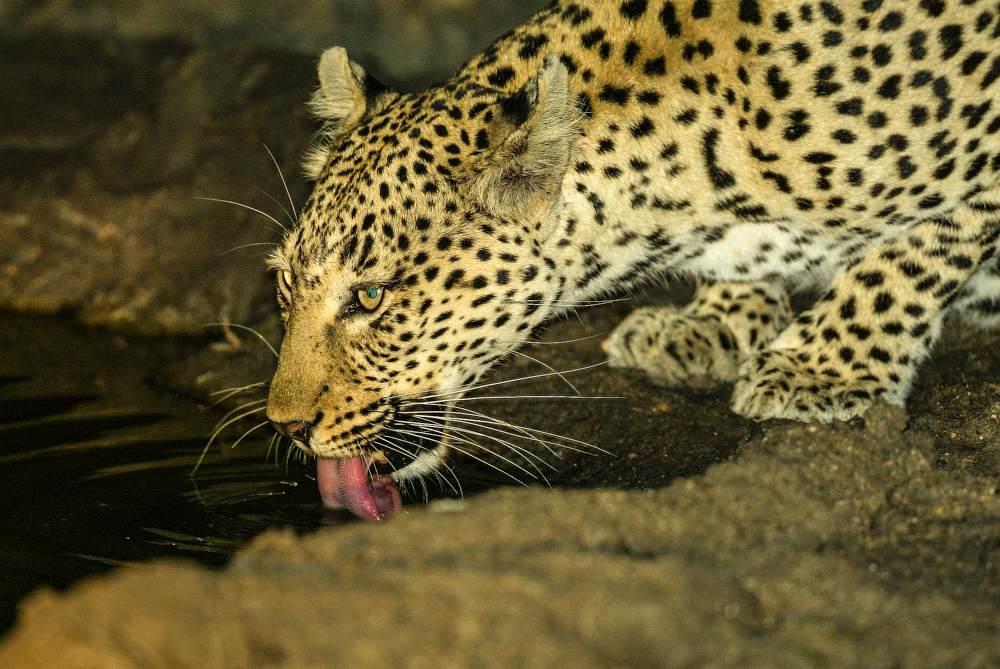The best results come from the best planning, thoroughly knowing your equipment and lots of practice!
And some useful tips-’n-hints towards achieving success.
When you look at a great wildlife, nature, sports, or for that matter, any great image, do you ever wonder how it happened? Was it just a lucky moment – a fluke shot, or was there a lot more to achieving that shot?
The legendary South African golfer, Gary Player was once asked what made him such consistently successful golfer, to which he responded “The more I practice, the luckier I get…”
This was further echoed and reinforced in the book titled “The Outliers” by Malcolm Gladwell, where he examined the human factors which contribute to high levels of success.
Some of the important common denominators which run throughout the many success stories of people and their outstanding achievements, is the fact that they learned all there was to learn about their particular sport, skill, art etc, then spent time understanding just what made it all work, in order to achieve a high rate of success, and finally dedicatig no less than 10,000 hours or more, practising, perfecting and honing those talents and skills.
While the magical 10,000 hours sounds great, not all of us have that kind of time outside their regular life, to dedicate to seeking perfection, but here are some useful tips-’n-hints towards moving in that direction.
Get to know your equipment properly.
Camera manuals are notoriously tricky to follow( *I am being very kind…) . Maybe it’s a “lost in translation” thing, but happily we have the Internet and U Tube where you can read, and/or watch and listen to virtually anything from setting up a new camera, suggested ideal settings for various circumstances, trouble-shooting etc…. If you can’t find the answers to your question/s on U Tube, there probably are no answers to be had!
Learn to fully understand where to find all the buttons,dials and wheels and what they do. Get to understand the sequences which change the settings, so when confronted by a particular circumstance in a real life situation, which requires a setting change, you know exactly where to find the mechanism, how to change it, and what effect it will have on the image.
*TIP: Even though I like to think that I have a sound knowledge of my equipment, I still carry a hard copy manual for each camera model in the same camera bag at all times.
Learn how to change settings quickly, so it becomes an automatic function.
Wildlife, birds and action sports are fast-moving targets, so you need to operate quickly, because there are no second chances!
If you can, try to manage the setting changes without removing your face from the viewfinder. Rather practice all this in the comfort of your own home before you try it out in the field.
I learned this very valuable lesson while on a trip the world-famous Londolozi Game Reserve (Sabi Sands region — South Africa). We had tracked a leopard, and having followed it for nearly an hour before ending up at a small waterhole, the vehicle was carefully positioned to face the leopard as it started to drink.
It was pitch-dark and ethically you may not shine a light directly into the eyes of any animal after dark, so the spotlight (Of course no flash!) was very sparingly swept over it’s head, leaving only seconds on each sweep of the light to capture an image… …. It’s times like that moment where you need to shoot, chimp, adjust and shoot again… Believe me, you learn very quickly in places where the the price of a bed-night is enough to make your eyes water!
Practice, practice, practice and more practice!
To achieve success takes lots of practice, and practice is all about shooting regularly. Taking your camera out of it’s bag once a month is not practice!
Push yourself out of you comfort zone to photograph different subject matter.
I am a wildlife, birds and actions sports photographer who works in Sub-Saharan Africa’s wilderness areas, but I can’t always be out in those awesome wilderness areas. I live in a suburban little town, so when I am not out in the bush following nature , or on the beaches when the surf is “pumping”, I regularly force myself out of my comfort zone, to carry a camera to local functions, school sports and other areas of interest. (*I have to say that watching some of the antics at these venues, sometimes leaves me wondering if there is any difference between human and animal behaviour!) But it’s all good practice. Try it, and you will be pleasantly surprised at how much fun it really can be.
The other afternoon, while photographing rally cars at this year’s Trade Brands SA Tour Natal motor rally, we had completed shooting and popped in to the local pub for a quick beer before going home. Serving behind the bar was a wonderful barman who hails by the name “Lucky”.
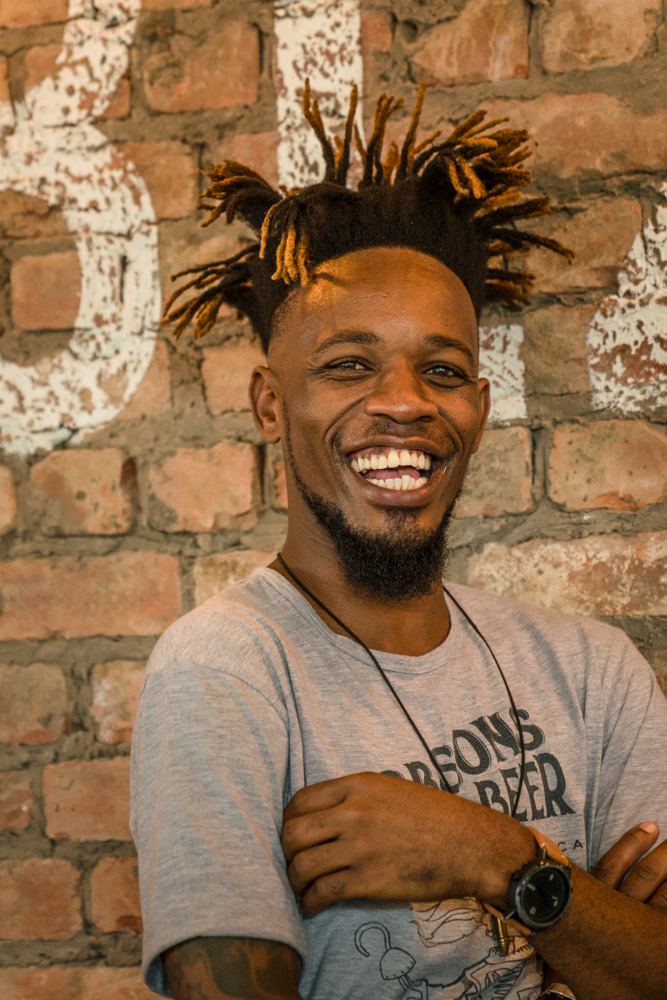
Barman “Lucky” (* Kind thanks to Robsons Real Beer — Lifestyle Centre, Ballito, KwaZulu Natal — South Africa) SONY A7R iii / SONY G Master 24mm — 70mm f2.8 ( 1/60 sec f2.8 ISO 1,600 )
Spend time to carefully study and observe your subject, and also the surroundings.
Wild animals, birds and people have a number of things in common, but in the world of photography, conservation and action sports, one thing is for sure… All these living organisms and people are creatures of habit, which means that wily photographers are able to study and observe the behaviour and habits of their subjects, often enabling them to anticipate what will happen next.
I make a point of first taking time to study an area, sun position, wind direction, terrain, and if I am photographing the big, dangerous animal species, I am also highly cognisant of an escape route in the event of a problem!
As a trained game ranger and conservationist, I am also very careful never to enter the private space of any animal, to the extent that it becomes a concern to that animal. If I take up a respectful position, and the animal decides to come into my space, it is I who has the prerogative to extract, or sit things out, but this requires understanding the general character traits of a typical species, as well as careful observation of the actual animal’s body language and signals which it sends.
*If you ever find yourself in just such circumstances, and your are with an experienced ranger, the ranger has the sole prerogative to call all the shots. The instructions of the ranger in control, are THE LAW and may not be questioned!
While studying my subjects, I look for recurring and repetitive behaviour, the surroundings, and any other significant factors contributing to the scene in front of me. For example: Carmine Bee-eaters.
The breeding/nesting site which we visited in November 2017 covers an area about 200 metres wide by 100 metres deep and stretches inland from the top of the Zambezi River bank.
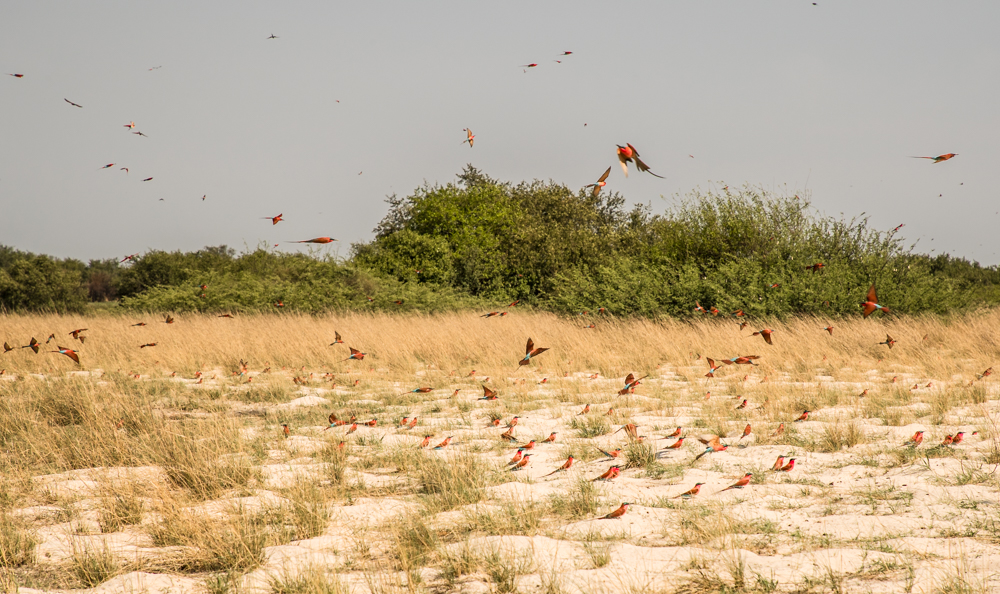
Carmine Bee-eater nesting site above the bank of the Zambezi River (Namibia)
Timing is always important.
We found that best time to photograph these birds was in the early morning, with great light from 06hr30 until about 09hr30 when the temperature became unbearable at an average of 38 C — 42 C! Although we did make one attempt to photograph the birds on the first afternoon when the light was good, but the temperature before sundown was unbearable!
Check the wind.
Over a period of seven mornings we experienced the wind blowing from varying directions. Most birds naturally take off and land like aeroplanes, into the wind for lift, and the fact that the best bird images invariably capture the subjects facing the camera, but we also had to contend with the direction of the light, which then made things rather tricky, and called for some innovative thinking.
Move around the area.
Moving around the area, changing positions to achieve the best possible vantage point from where to shoot is another essential requirement when photographing nature.
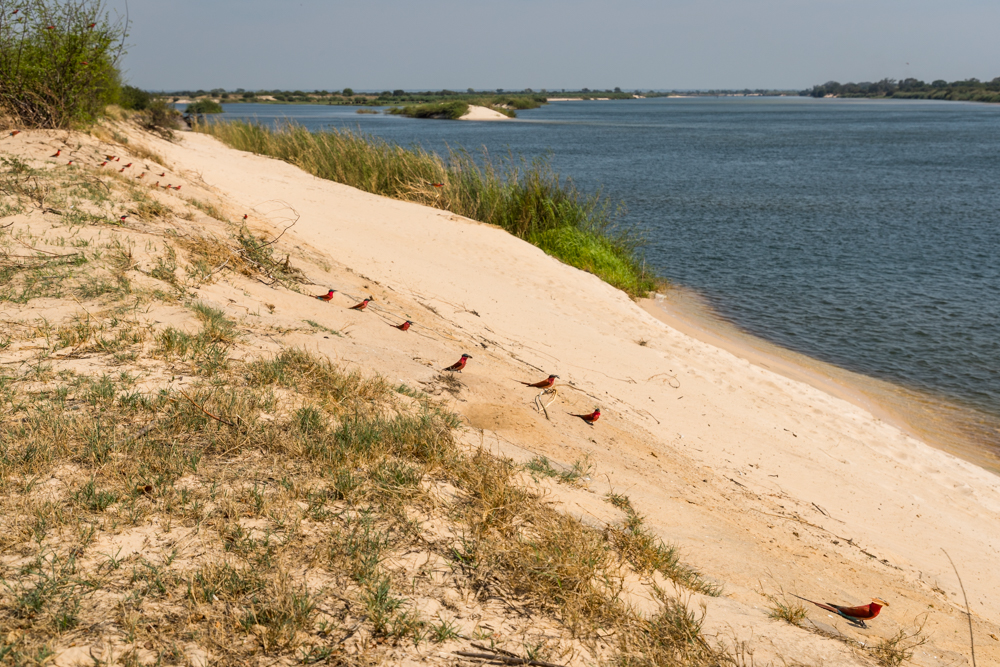
Looking back, over the Zambezi River.
On three other mornings, in order to continue photographing the birds flying towards me, I had to move down towards the Zambezi River itself. However being rather mindful that the Zambezi River is home to many large crocodiles that lurk in the shallows, or sun themselves on the banks and sand-bars of the river, I always kept looking around for some big critter who may have thought that it was breakfast time! And I was certainly correct, as this next image will bear testimony to just that concern…
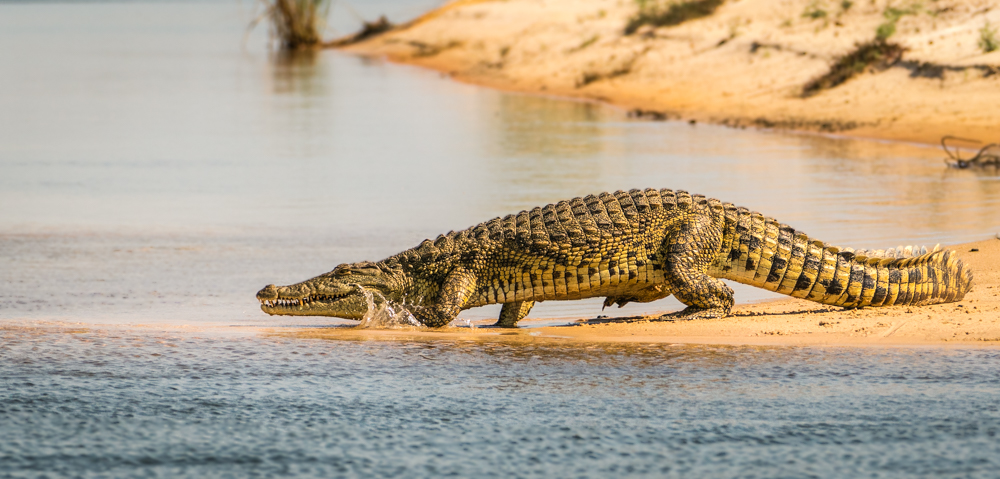
Photographing birds near the Zambezi River does have it’s drawbacks! SONY A9 / SONY G Master 70mm — 200mm f2.8 ( 1/1,2500 sec f7.1 ISO 800 )
My wife sat up on the flat area above the Zambezi River keeping her eyes wide open for crocodiles, while I positioned myself below the lip of the river bank, just back from the water’s edge. I crouched ow down, waiting for the birds to circle around while doing their own checking for one of the many ground dwelling predators such as Water Monitor Lizards,and other would-be egg and chick thieves lurking around for a quick breakfast, before finally deciding to land.
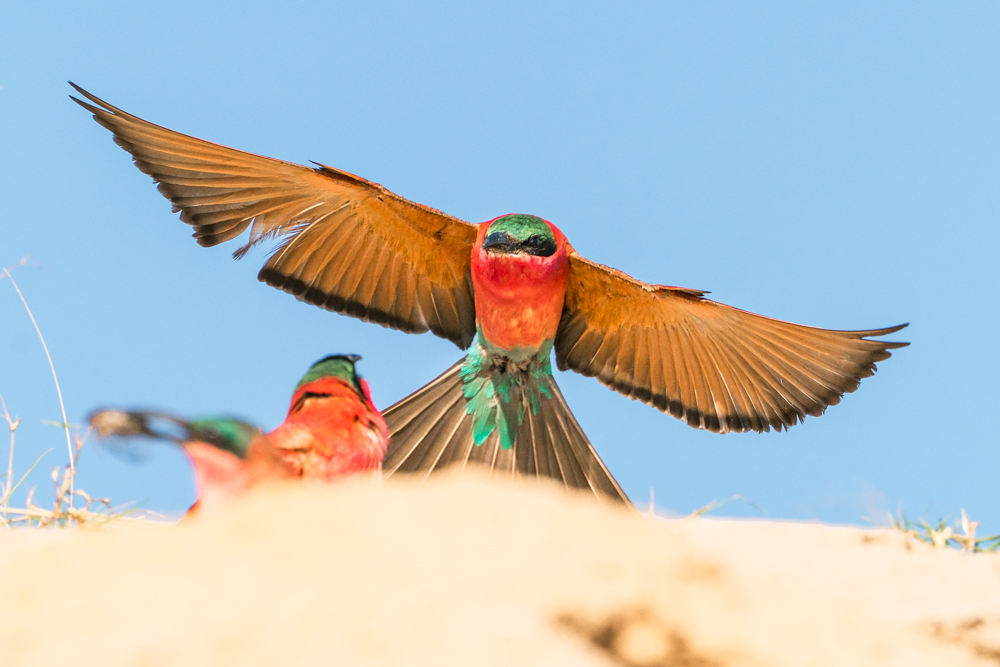
A Carmine Bee-eater comes in to land on the edge of the Zambezi River bank. SONY A9 / SONY G Master 70mm — 200mm f2.8 + SONY G Master 2x converter ( 1/2,500 sec f7.1 ISO 640 )
